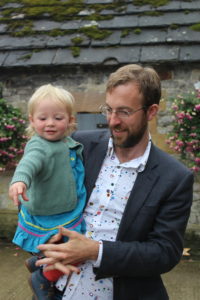About Me
I want to know how the Earth works…
 I am Mark Naylor, a Reader in Computational Geoscience and Hazard Research in the School of GeoSciences at the University of Edinburgh.
I am Mark Naylor, a Reader in Computational Geoscience and Hazard Research in the School of GeoSciences at the University of Edinburgh.
Inspired by my time in the outdoors, I really want to know about how the Earth works. In my research, I have studied how mountains grow, landscapes evolve and the natural hazards that emerge in these dynamic systems. I particularly like to find new ways of understanding the natural world using computational, statistical and mathematical methods.
In this blog, I hope to share some of my experiences of how numerical tools allow us to answer new questions about the natural world through interdisciplinary working and maybe tell you about some methods that I think are quite cool. I have also brought in members of my research group to contribute to the posts.
I will be updating a public GitLab repository with working code to extend what I have been talking about in the blog [https://git.ecdf.ed.ac.uk/mnaylor/blog-post-notebooks] . Hopefully you might find this useful!
If you have a question that you think could benefit from a quantitative analysis, feel free to drop me a line.
To find out more about my work, have a look at my Google Scholar page.
I am also a Senior Member of the NERC Constructing a Digital Environment Expert Network. I am also the Academic Lead for IT within the School of GeoSciences.
The Edinburgh-Seismicity-Hub GitHub repos hosts various seismicity analyses from my group ranging from exploratory data analyses to earthquake forecasts generated using inlabru.
- Exploratory Seismic Analysis using R Markdown
- ETAS.inlabru is the public release of our R based package for generating synthetic catalogues and fitting the temporal ETAS model. For technical details see:
- Serafini, Lindgren and Naylor, (Submitted) Approximation of Bayesian Hawkes processe models with Inlabru, Submitted to Environmetrics (Preprint)
- Naylor, Serafini, Lindgren, and Main, (In Press) Bayesian modelling the temporal evolution of seismicity using the ETAS.inlabru package, Submitted to Frontiers in Applied Mathematics and Statistics (Preprint)
Current Research Interests
- Seismic Monitoring of Bedload Transport in Mountain Rivers
- Statistical Forecasting of Earthquakes and other Hazards
- Earthquake Hazard and Statistical Seismology
- Mountain Belt Growth, Erosion and Foreland Basin Evolution
Wider Research Interests
- Detrital Thermochronology
- Carbon Capture and Storage


Recent comments